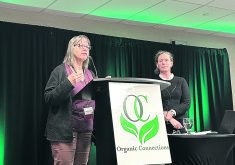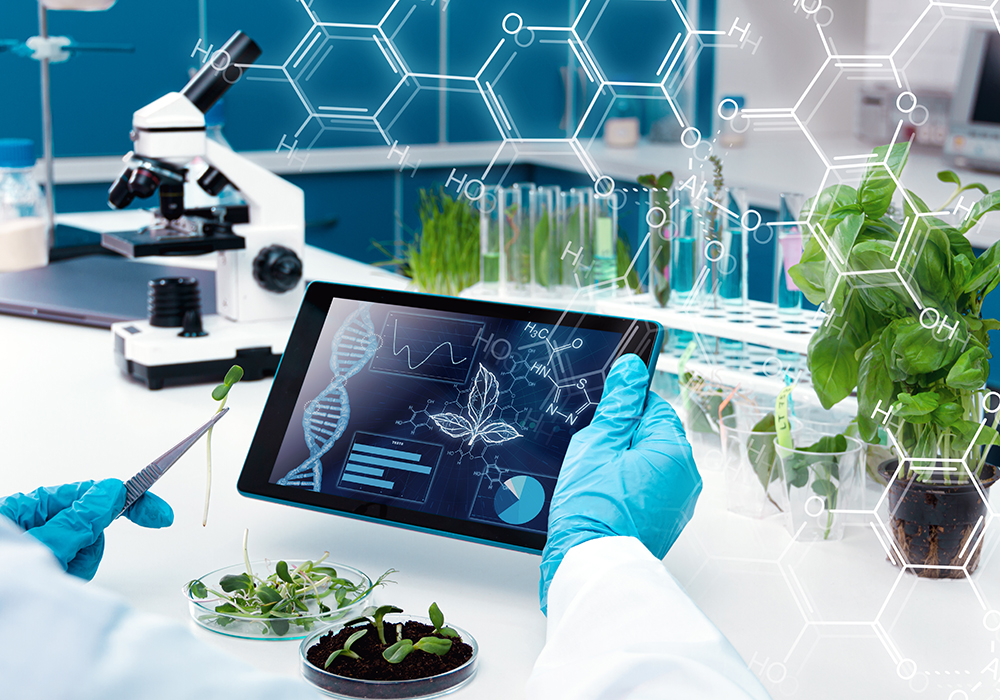In the end, it was consumer demand at the grocery counter that largely solved the GMO labelling issue before the wheels of government regulation imposed a standard.
“We have a vocal minority for whom it’s an issue,” said Mike von Massow, a food economist in the University of Guelph’s food, agricultural and resource economics department.
“But for most Canadians, the truth is they either don’t know or they don’t care that they’re eating products from genetically modified plants.”
On Jan. 1, 2021, all major food product manufacturers in the United States began mandatory labelling of such products under the U.S. Department of Agriculture’s National Bioengineered Food Disclosure Standard. Smaller producers are to follow suit in the new year.
Read Also

Research looks to control flea beetles with RNAi
A Vancouver agri-tech company wants to give canola growers another weapon in the never-ending battle against flea beetles.
The standard offers companies several options: “text, symbol, electronic or digital link, and/or text message.” This information has already begun showing up on packaging in grocery stores on both sides of the Canadian border.
Von Massow said food manufacturers will choose the option that best fits their marketing strategies. For example, if they want to use it as a selling point, they are more likely to prominently use the approved USDA green-and-yellow “bioengineered” or “derived from bioengineering” logo. If not, the information is more likely to show up as a text line somewhere on the side of the box or as a QR code linking to a website.
This, of course, is unlikely to mollify those who are most concerned about the issue.
“It’s a label that made everyone equally angry,” said Kevin Folta, a professor of molecular biology and genomics based in Florida.
“The activists don’t like it; they wanted a skull and crossbones. The industry doesn’t like it because it’s ambiguous.”
Folta has long been a champion of science outreach and communication. Among his more recent efforts is the Talking Biotech podcast, where he hosts expert guests to discuss genetic modification in agriculture, food and public health as well as broader themes of misinformation within the contexts of public health and food security.
Folta said the USDA bioengineered label came out of decades-long pressure to label GM food at the state level. This would have been untenable for food manufacturers, so a national standard was developed instead.
GM products are everywhere, particularly since, as Von Massow observes, virtually all canola and corn grown in North America are GM varieties. This means cooking oil, margarine, corn syrup, cereals. GM sugar beets and soybeans are similarly ubiquitous.
There are relatively few GM whole foods on the market, and the ones that do exist were developed by public researchers, corporations and private citizens to solve specific problems.
Rainbow papaya, developed by Dennis Gonsalves at Cornell University in the U.S. and released in 1998, saved the crop from ringspot virus, which threatened to wipe out the crop in his native Hawaii.
More recently, Simplot introduced its Innate potato, which is less susceptible to black spot from bruising and produces less acrylymide, a toxin, when deep fried.
The Arctic Apple is the brainchild of Neal Carter, an apple and cherry grower in British Columbia who envisioned a non-browning fruit.
Internationally, insect-resistant eggplant has proven popular with farmers in Bangladesh, while Golden Rice, which originated from an international project to address vitamin A deficiency that causes death in children, has just been approved for cultivation in the Philippines.
The first GM livestock product, AquaBounty’s salmon, is originally derived from research at the Memorial University in Newfoundland and Labrador. The fish are designed to mature more quickly, thus cutting feed and energy costs in their land-based closed-loop production systems. The company recently started shipping fish from its first Canadian and U.S. facilities, to little fanfare.
“In my previous meeting we were talking about AquaBounty salmon,” Von Massow said.
“It’s on the shelves in Canada, unlabelled, and no one seems to be that concerned.”
Von Massow points out that the market has already solved the labelling conundrum for the minority of consumers for whom GMOs are an issue. In fact, the Non-GMO Project identified it as a money-making opportunity. Food producers who want to target this consumer segment simply need to get verified, pay the fees and put the well-known butterfly label on their goods.
One of the criticisms of this label is that it appears on thousands of products that have no GMO equivalent, or in the case of salt and bottled water, no genetic material at all. Von Massow accepts this because the Non-GMO Project is not intended to convey vital information such as nutrition or allergen content. It is a marketing label, and it works.
He and graduate students recently completed consumer research that bears this out. They added “genetic engineering” labels to various products in the same environment as a typical grocery store — that is, with all the competing labels present.
“The ‘Non-GMO Project Verified’ label makes a difference, as does the organic label. It’s a relatively small proportion of people, but for people for whom it matters, it makes a difference,” Von Massow said.
“When we added the labels that said ‘genetically modified’ or ‘genetically engineered,’ we made absolutely no difference in the demand for those products, and in fact there were a couple of instances where they actually increased the demand for those products.”
This observation supports Folta’s contention that food manufacturers missed an opportunity by not embracing GMO labelling on their own. Marketing is all about emphasizing what is different and better about a product, something he knows well as president of his local farmers market.
Folta’s wife is a farmer, raising exotic poultry, fruit and vegetables that offer tastes and textures not easily found in the local supermarket. The idea is to figure out what consumers value and speak to these values.
“I always have said it’s a great opportunity for the food production industries to get behind a label that says, ‘proudly made with genetically engineered ingredients,’ and tout the sustainability aspects of modern technology,” Folta said.
“I thought it could have been a watershed moment to really educate the consumer in terms of the power and capacity of technology to do good things.”
For Von Massow, the bigger issue of mandating non-essential labelling on food products is space: there is only so much consumers can or will read as they are picking up their groceries. In the case of consumers preferentially picking GMO-labelled items, he speculates they may have just seen the green or blue labels and associated the colours with “something good.”
While he has yet to do the research to confirm this, Von Massow’s suspicion is that labels are becoming too complicated. The primary purpose of a label is to make it easy for consumers to find what they want with a little essential information on ingredients and nutrition.
“I think we are approaching label fatigue, in that we are putting so much information on packaging that we are reducing the efficacy of any of that information,” he said.
“Both from a marketing perspective and from a regulatory perspective, we may well be better off prioritizing the information we’re going to share.”

















